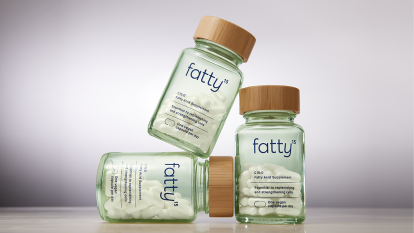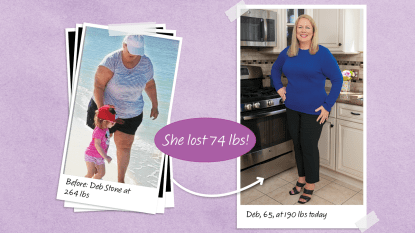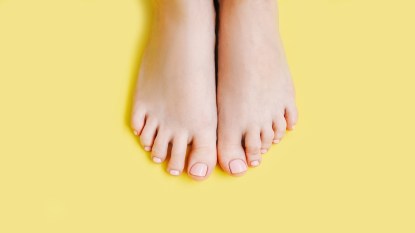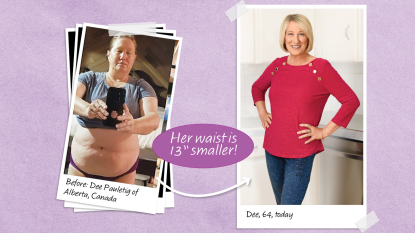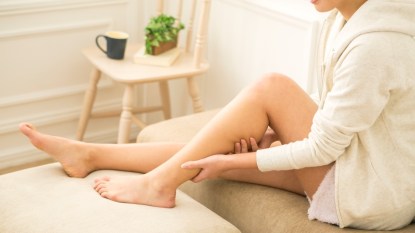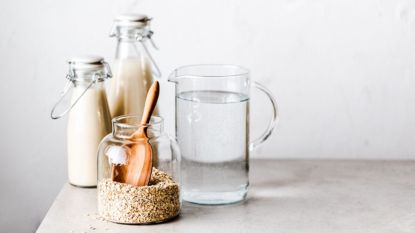Pinky Toe Woes: What Is a Tailor’s Bunion, And Why Does It Hurt So Much?
See the shoes a Stanford doctor recommends to ease bunion pain, plus more home remedies
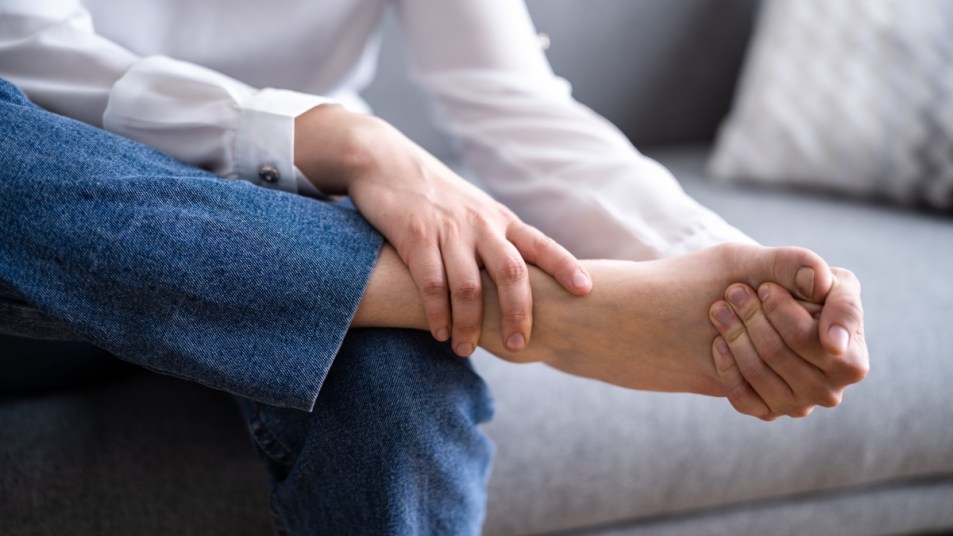
It’s bad enough to deal with bunion pain on your big toe. But a tailor’s bunion near your pinky toe? They’re often even more uncomfortable! “Tailor’s bunions are also called ‘bunionettes’ because they’re like small bunions on the outside of your foot,” explains Jensen Henry, MD, an orthopedic foot and ankle surgeon at the Hospital for Special Surgery in New York City. “In addition to pain near the pinky toe, patients may also have pain with shoe wear or a painful callus at that area.”
The good news? If you’re struggling with a bunion by your pinky toe, there are some easy home remedies that help alleviate the ache. Here we break down experts’ best tips, plus reveal when it’s time to consider surgery.
Why is it called a tailor’s bunion?
“In the old days, tailors would work while sitting on the floor in a cross-legged position,” says Elizabeth Reilly, DPM, clinical assistant professor of orthopedic surgery at Stanford University School of Medicine. “Tailors were usually barefoot or wearing really thin leather shoes.” The sitting position put pressure on the outside of their smallest toes, and they’d gradually develop bumps there.
But what exactly is a tailor’s bunion? It’s a bony bump that develops on the outside of the foot. It occurs when the pinky toe moves toward the fourth toe, and there’s deviation of your fifth metatarsal — the long bone in your foot that connects to your pinky toe. And while they differ in size and location from traditional bunions (found at the base of the big toe), both are painful. Over time, pressure on the joints in the foot causes the toes to move out of place and lean inward toward the neighboring toe. “You commonly see tailor’s bunions within a foot of the traditional bunion,” Dr. Reilly adds.
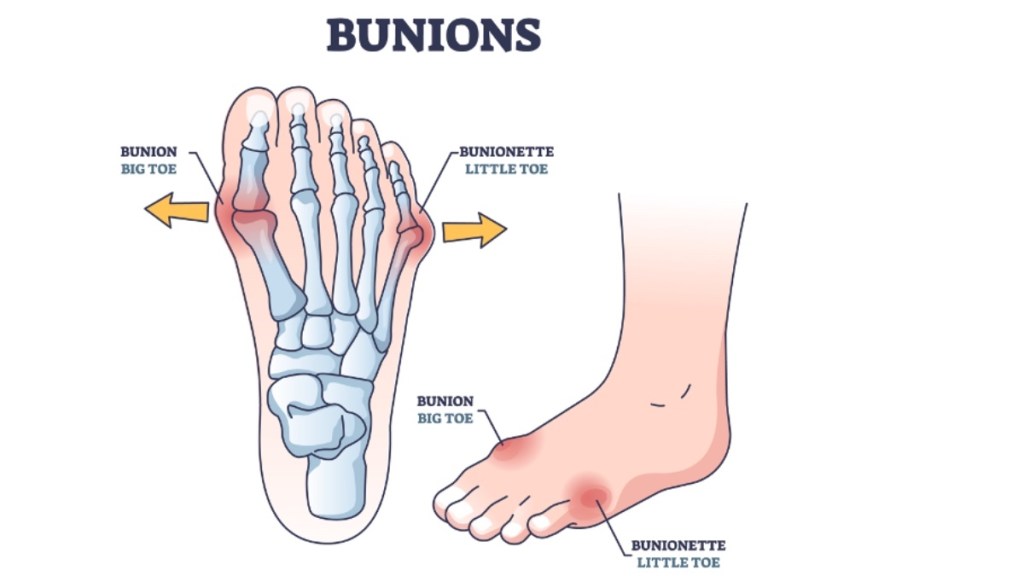
Risk factors for a tailor’s bunion
Tailor’s bunions stem from a structural problem, says Dr. Reilly. People born with a foot bone irregularity can often experience problems later in life. “In most cases, the tailor’s bunion is a deformity, which means the bone has an underlying crooked nature that can be attributed to genetics,” Dr. Henry adds.
Bunions and tailor’s bunions can occur in one or both feet, and they affect about 19% of the global population. Risk factors for a tailor’s bunion include:
- Genetics
- Gender (women are more prone to bunions)
- Age
- A history of foot injuries
- Repetitive activities that press the little toe inward
- Wearing tight, pointy shoes
- Flat feet
- Inflammatory diseases such as rheumatoid arthritis or osteoarthritis
- Hypermobility of the forefoot (instability) during the propulsion phase of the gait cycle
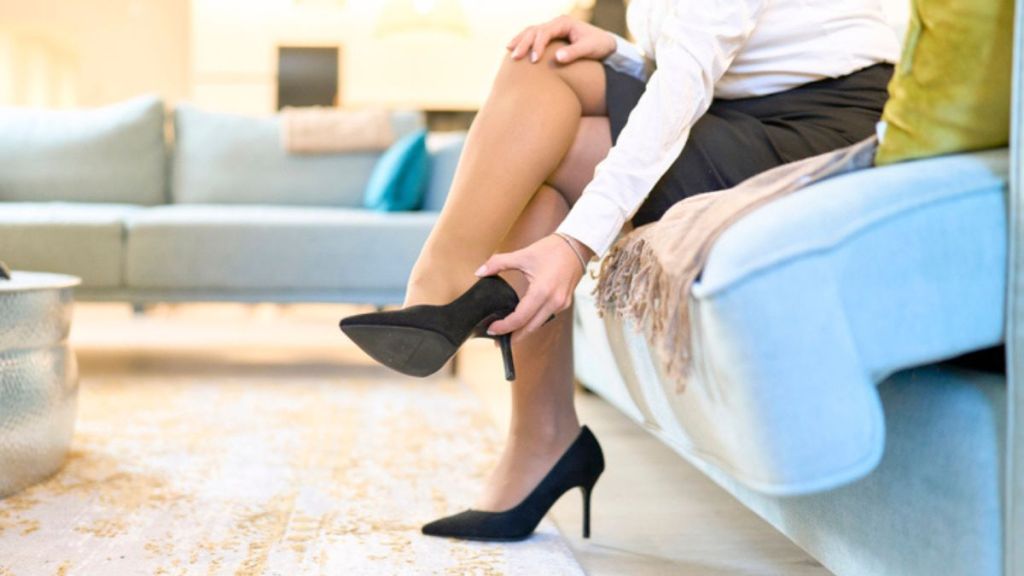
Still, there’s some debate among experts as to whether lifestyle habits (like wearing snug shoes) actually cause bunions or simply aggravate them. “Even if you don’t have a really obvious family connection, bunions are always genetic, patients do nothing wrong to create them,” Dr. Reilly says. “It is not from shoe choices, bunions are very much things that are thrust upon us.”
In fact, Dr. Reilly had corrective surgery on her tailor’s bunions when she was young. “That’s actually part of what set me on the road to being a foot and ankle doctor,” she reveals. “I find it very satisfying to help my patients with them, and I appreciate how unpleasant tailor’s bunions can be.”
Signs and symptoms of a tailor’s bunion
In addition to causing pain near your pinky toe, a tailor’s bunion can trigger:
- Swelling or inflammation
- Redness
- Stiffness in the small toe
- Difficulty walking
- Pain that worsens when wearing shoes, or difficulty wearing certain types of shoes
- Corns or calluses (thickened skin)
A tailor’s bunion will worsen over time
“Do not let pain persist for more than a week before seeking professional help,” says holistic podiatrist Robert Kornfeld, DPM, who practices in New York. “Unlike other parts of the body, when a pain syndrome begins in the foot, it is still going to be beaten against the ground thousands of steps every day.” Getting help sooner can ward off chronic inflammation.
Without treatment, a tailor’s bunion will worsen and it may become difficult to wear regular shoes or walk. “At minimum, seek medical advice if the bunion or bunionette is painful, limiting shoe wear or has been progressing or worsening over time,” says Dr. Henry. She suggests seeing your primary care doctor, who may have a recommendation for a specialist. Or seek the advice of an orthopedic foot and ankle surgeon.
Related: 7 Doctor-Recommended Bunion Exercises to Ease Pain & Prevent Them From Growing
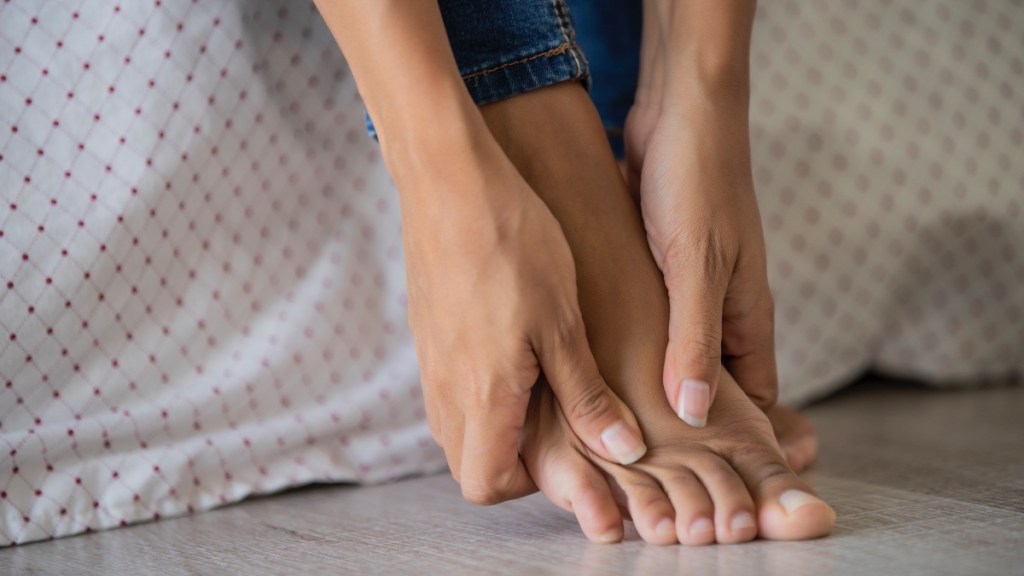
Home remedies for a tailor’s bunion
After a doctor rules out gout, fractures or other causes of foot pain with X-rays or imaging, they’ll likely look to short-term pain relief. It may be via anti-inflammatory injections or prescription medications. “Tailor’s bunion treatments are what we call palliative,” Dr. Reilly says. “Be happy, make it comfy. Keep it from being constantly irritated.” To ease the ache from the comfort of home, try this:
1. Swap your shoes
“Conservative treatment starts with appropriate shoe wear choices and activity modification,” says Dr. Henry. That can mean transitioning from pointed-toe shoes or shoes with a narrow toe box to round-toe shoes or shoes with a wider toe box.
The hitch: “Almost all shoes designed for women are cut very tight along the outside of the foot,” Dr. Reilly notes. Some brands design wider shoes that give the toes more breathing room and accommodate bunions. Dr. Reilly likes Altra and IPD sneakers, as well as Calla or Vivaia dress shoes. “An over-the-counter or custom orthotic may be helpful as well,” Dr. Henry adds.
“Good shoe wear choices doesn’t mean abandoning all of your pretty shoes forever, but you may make some common-sense choices throughout the day,” Dr. Henry says. “If you commute, wear sneakers going in and then switch to formal shoes for important meetings or events. If you’re attending a wedding, wear your dressier, narrower shoes for pictures then switch to something less constricting and more comfortable for the dance floor.”

Related: ‘I’m a Podiatrist and These Are The Most Comfortable Flats for Women Over 50’
2. Draw a warm foot bath
“Warm soaks can be helpful,” says Dr. Kornfeld. The warmth relaxes tense, stiff muscles surrounding the affected joint, which can take some pressure off a tailor’s bunion. Plus it boosts healing blood flow to the area. Simply fill a large bowl or basin, add a scoop of muscle-relaxing Epsom salts (if desired) then soak your foot for 15 to 20 minutes as needed.
3. Apply a pepper cream
Dr. Kornfeld says topical liniments designed to ease pain can tamp down the discomfort of a tailor’s bunion. Consider opting for a cream made with capsaicin, the compound that spicy peppers their heat. When applied topically, capsaicin helps block pain signals. The natural remedy works so well, a review in Biomedicine & Pharmacotherapy found folks who applied capsaicin cream daily reported improvements in foot pain and its intensity within 8 weeks. (See more of our best doctor-backed bunion self-care tips.)
4. Add a pad
“Many patients can be relieved of the pain by placing padding behind the fifth metatarsal head,” Dr. Kornfeld says. This is where the pinky toe meets the long bone in your foot. This “disperses shoe pressure away from the tailor’s bunion and onto the pad.” Just avoid placing a pad directly over the bunion itself, Dr. Kornfeld adds. This can cause unnecessary added pressure on the area.
Also smart: Skip the toe correctors
“There are a lot of over-the-counter devices or taping techniques that people like to try at home,” says Dr. Henry. “While I haven’t seen any of these cause harm, they won’t actually correct the tailor’s bunion, because they don’t correct the underlying deformity.”
When to consider surgery
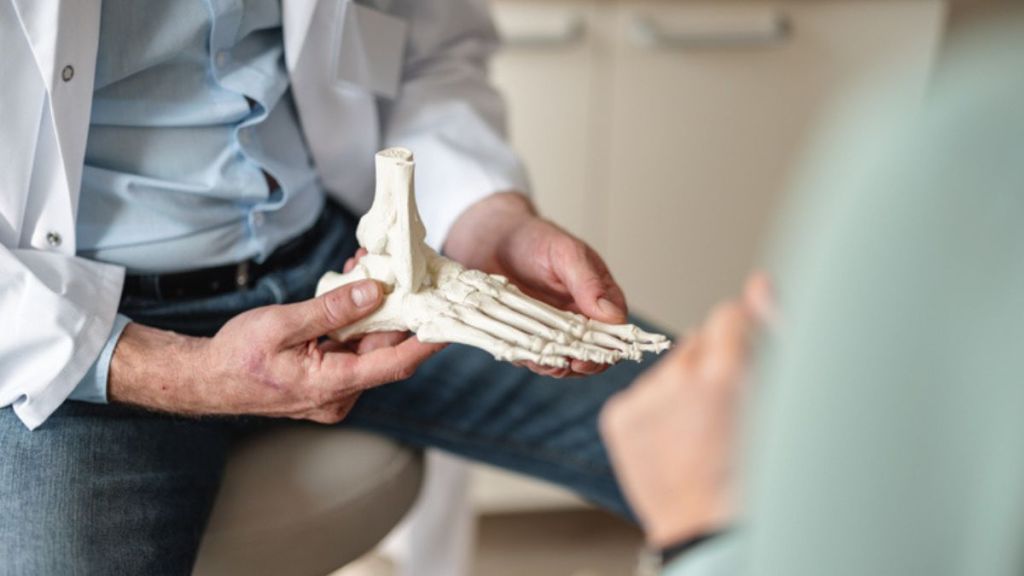
“If you’ve tried conservative treatment and you’re still getting symptoms, there are surgical options,” Dr. Henry says. Dr. Reilly says she is upfront with patients about the potential need for surgery. “When we look at the X-rays and make the diagnosis, I tell patients about how bunions are genetic and structural. So if the palliative care, the comfy shoes and padding don’t work,” then surgery should be considered.
“The mainstay of how we fix tailor’s bunions is by cutting the bone and shifting it into a better position,” Dr. Henry notes. “To fix the underlying problem — which is deformity — we have to change the alignment of the bone. Fortunately, this is a common and safe operation performed by many orthopedic foot and ankle surgeons.”
Dr. Henry urges women with tailor’s bunions to seek care from a foot and ankle surgeon when considering surgical intervention. You can also seek the advice of a podiatrist, Dr. Kornfeld adds, since “all podiatrists undergo rigorous three-year surgical residencies in nothing but foot and ankle surgery.” In some cases, your surgeon may even be able to use a technique that involves a small incision that allows you to bear weight and walk shortly after surgery.
For more ways to relieve bunion pain:
7 Doctor-Recommended Bunion Exercises to Ease Pain & Prevent Them From Growing
2-Minute Bed Stretch Eases Bunion Pain + More Bunion Self-Care Tips
“This Healed My Painful Bunions — And You Won’t Believe the Before and After!”
This content is not a substitute for professional medical advice or diagnosis. Always consult your physician before pursuing any treatment plan.





